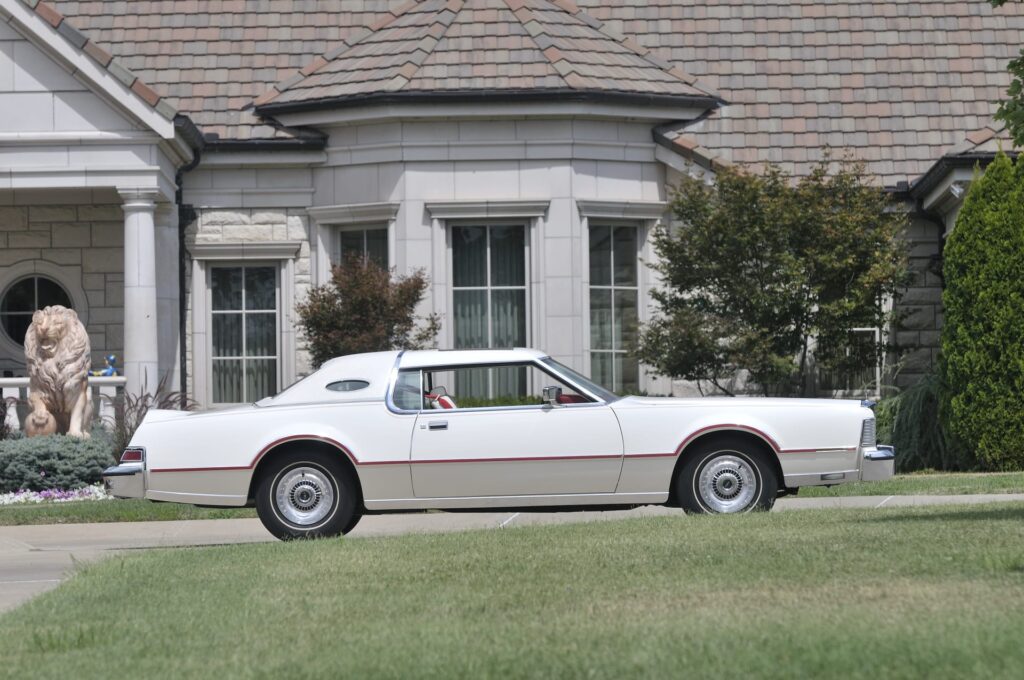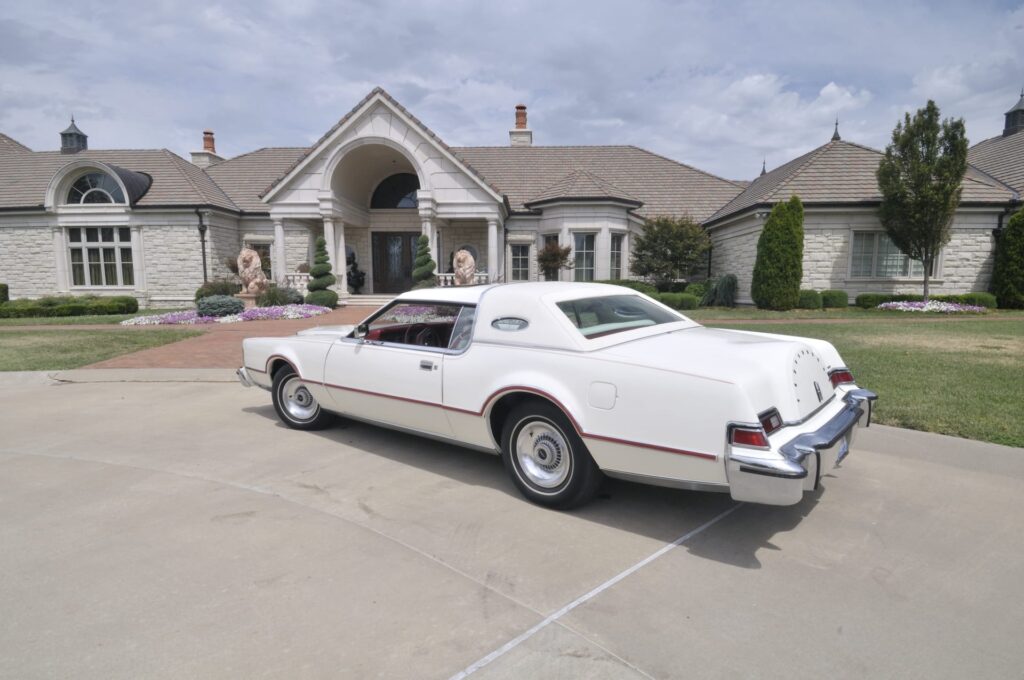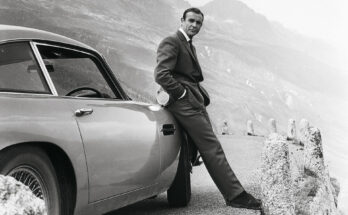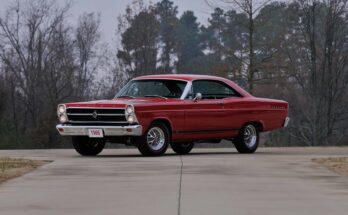Fun Fact
The 1976 Mark IV appeared in pop culture, notably in films like Car Wash (1976), where its flashy presence matched the era’s vibrant aesthetic. It was also a favorite of celebrities like Elvis Presley, who owned several Lincolns.

The 1976 Lincoln Continental Mark IV was a pinnacle of American luxury cars, embodying the era’s taste for opulence, size, and presence. Part of Lincoln’s prestigious Mark series, it was designed to compete with Cadillac’s Eldorado while offering a distinct blend of style, comfort, and exclusivity. Here’s a concise overview:
Design and Styling
The Mark IV was a striking vehicle, measuring over 19 feet long and weighing around 5,300 pounds. Its design, penned by Ford’s Wes Dahlberg under the direction of designer Gene Bordinat, featured sharp, angular lines, a long hood, and a short deck. Signature elements included:
- Opera windows: Small, oval rear side windows, a hallmark of the Mark series, adding a touch of elegance and privacy.
- Continental spare tire hump: The iconic rear decklid bulge, mimicking a spare tire, was a nod to classic luxury cars.
- Hidden headlights: Vacuum-operated headlamp covers gave the front fascia a sleek, clean look.
- Rolls-Royce-inspired grille: A bold, upright chrome grille dominated the front, exuding grandeur.
The 1976 model saw minor updates from previous years, with refined chrome trim and new color options. Special editions, like the Designer Series (e.g., Cartier, Givenchy, Bill Blass, and Pucci), offered unique paint, interior, and trim combinations, catering to buyers seeking exclusivity.
Performance and Powertrain
The Mark IV prioritized comfort over sportiness. It was powered by a massive 460-cubic-inch (7.5-liter) V8 engine, producing approximately 202 horsepower and 356 lb-ft of torque. Paired with a C6 3-speed automatic transmission, it delivered smooth, effortless cruising, though fuel efficiency was dismal (around 10-12 mpg), reflecting the era’s pre-fuel crisis mentality.The suspension, with coil springs and a live rear axle, was tuned for a plush ride, absorbing road imperfections with ease. Power steering and brakes ensured easy handling despite the car’s size, though it leaned heavily in corners, prioritizing luxury over agility.

Interior and Features
The Mark IV’s cabin was a showcase of extravagance, with plush leather or velour upholstery, woodgrain accents, and deep-pile carpeting. Key features included:
- Power everything: Seats, windows, locks, and even an optional power moonroof.
- Climate control: Automatic temperature control was standard.
- Quadraphonic 8-track stereo: A cutting-edge audio system for the time.
- Cartier clock: A luxurious touch, especially in the Cartier Edition.
The spacious interior comfortably seated four, with front and rear seats designed for long-distance comfort. Optional features like a vinyl roof and CB radio added to the car’s over-the-top character.
Cultural Context
Introduced in 1972, the Mark IV was a symbol of American excess, appealing to affluent buyers, celebrities, and those wanting to make a statement. By 1976, however, the automotive landscape was shifting. The 1973 oil crisis and emerging emissions regulations began to challenge the viability of gas-guzzling land yachts. The Mark IV was one of the last true personal luxury coupes before downsizing became the industry norm.

Production and Legacy
In 1976, Lincoln produced approximately 56,110 Mark IVs, with Designer Series models commanding a premium. Prices started around $11,000 (about $60,000 in 2025 dollars), making it one of the most expensive American cars of its day. Today, the Mark IV is a collector’s favorite, prized for its bold styling and nostalgic appeal. Well-preserved examples, especially Designer Series models, can fetch $20,000-$40,000 at auctions, depending on condition and provenance.


